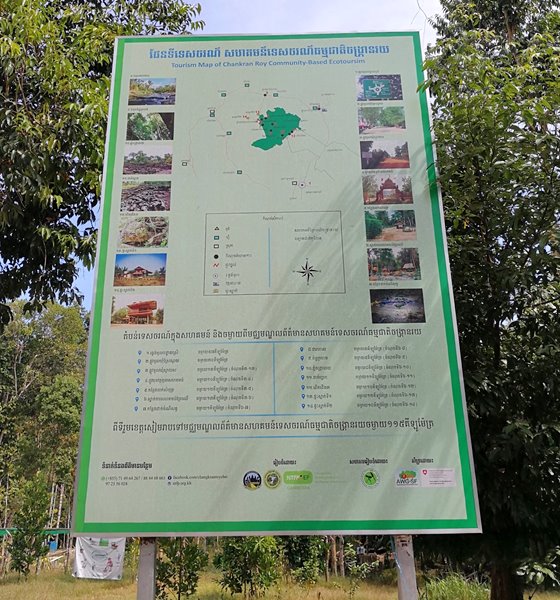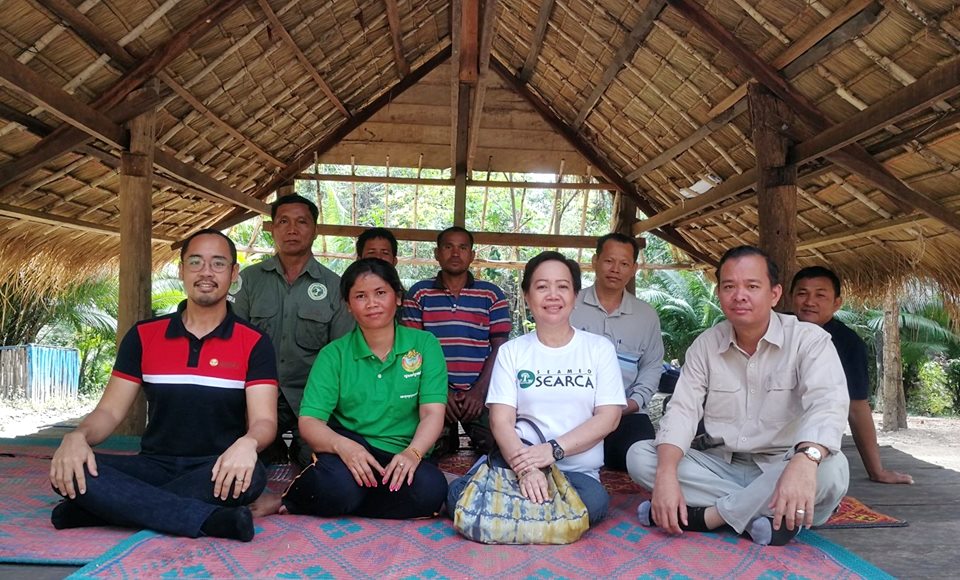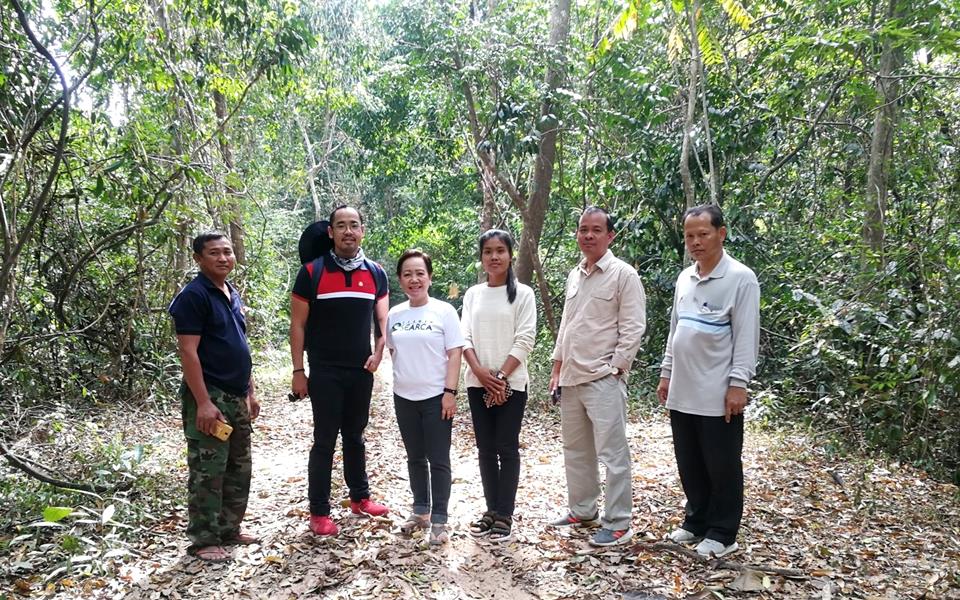 Tourism map of the Changkran Roy Community-based Ecotourism site.Mr. Long Ratanakoma, AWG-SF Focal Point and Deputy Director of DFCF, presented the project accomplishments and remaining activities. Implementation of the project began in April 2018 and as of January 2019, the project team has conducted eight case studies in selected provinces of Cambodia. These case studies are (1) Resin-based CF in Stung Treng Province, (2) Ecotourism-based CF in Siem Reap, (3) Credit-based CF in Kampong Thom, (4) Charcoal-based CF in Pursat, (5) Bat Manure-based CF in Battambang, (6) Bamboo-based CF in Kampong Speu, (7) Rattan-based CF in Kampot, and (8) Wild Honey-based CF in Kraite.
Tourism map of the Changkran Roy Community-based Ecotourism site.Mr. Long Ratanakoma, AWG-SF Focal Point and Deputy Director of DFCF, presented the project accomplishments and remaining activities. Implementation of the project began in April 2018 and as of January 2019, the project team has conducted eight case studies in selected provinces of Cambodia. These case studies are (1) Resin-based CF in Stung Treng Province, (2) Ecotourism-based CF in Siem Reap, (3) Credit-based CF in Kampong Thom, (4) Charcoal-based CF in Pursat, (5) Bat Manure-based CF in Battambang, (6) Bamboo-based CF in Kampong Speu, (7) Rattan-based CF in Kampot, and (8) Wild Honey-based CF in Kraite.
Mr. Ratanakoma commended the ASRF and the Southeast Asian Regional Center for Graduate Study and Research in Agriculture (SEARCA), which manages ASRF, for its strong support to Cambodia. The current project is the fifth under the ASRF. He highlighted that these projects, implemented since Phase I of the ASRF (2014-2017), contributed to building the capacity of forestry officers, as well as in developing policies that support CF in Cambodia. It is also a good venue to link the local community at the grassroots to the sub-national level and on to the national level. Moreover, he underscored that Cambodia is in the process of reviewing its Forestry Law. The output of this research project is expected to provide recommendations to policy makers on how to improve local livelihoods through Community Forestry.
Community Forestry (CF), or Social Forestry, in Cambodia was first introduced in Takeo Province in 1994. After 25 years of implementation, CF is recognized as a strategy that contributes to secure access to forest resources, if legally recognized, and provide forest products such as food, medicine, and grass fodder, among others, to participating members. Presently, however, economic benefits generated from CF sites are found to be still limited.
The Swiss Agency for Development and Cooperation provides funds for these projects through the SEARCA-ASRF program. (Xyrus Godfrey B. Capiña)
 SEARCA-ASRF, the project team, and members of the Changkran Roy Community-based Ecotourism site.
SEARCA-ASRF, the project team, and members of the Changkran Roy Community-based Ecotourism site.
